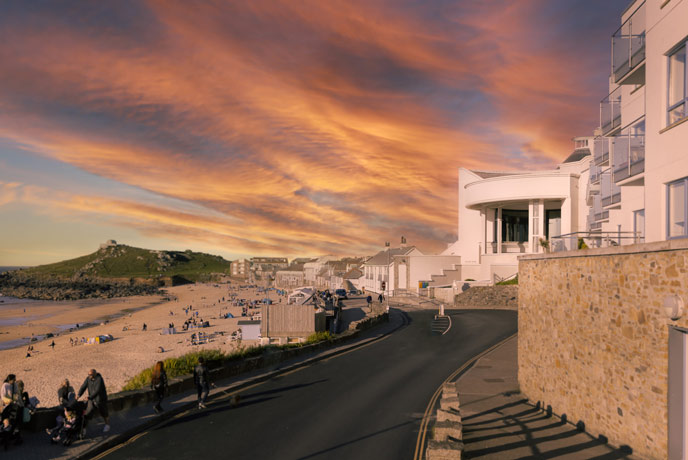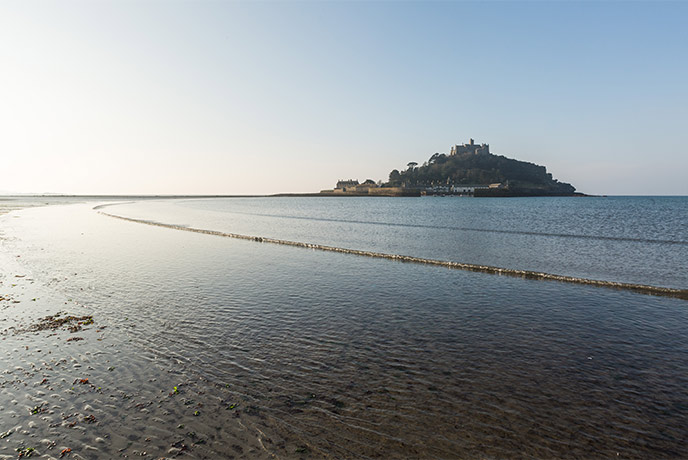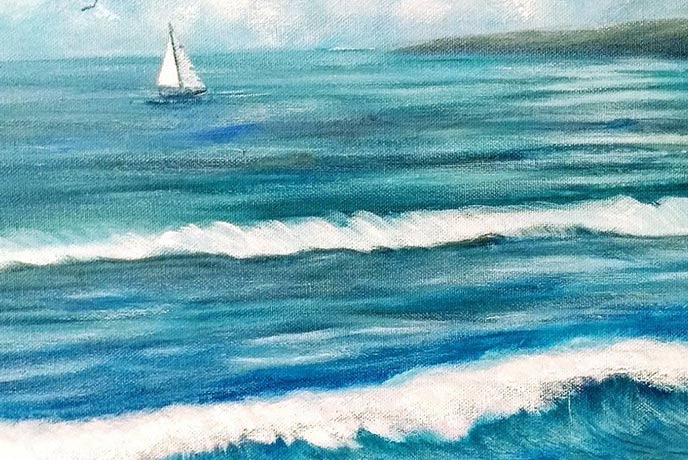Along with its stunning coastline, rolling countryside, imposing castles, elegant country houses and intriguing prehistory, Cornwall also boasts some unexpected and truly unique architectural treasures. Across the region you can discover buildings that are not only visually arresting and culturally important but also have fascinating stories connected to them, from Brutalist car parks that have been catching eyes since the 1960s to ancient stone structures and circles that hark back to a bygone era.
So whether you are just looking for somewhere unusual to visit or planning a whole road trip to take in as many Cornish architectural gems as you can, here is our guide to some of Cornwall’s fascinating - and oh-so-unmissable - buildings!
The Old Post Office, Tintagel
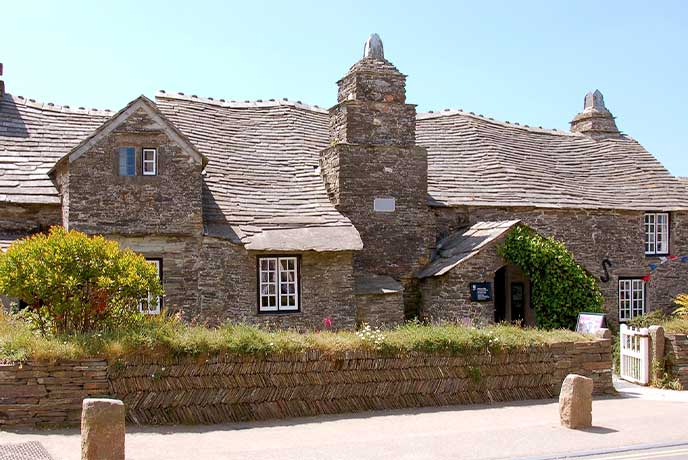
This ancient building has to be one of the oldest houses in Cornwall, and with its wonderful undulating roof, it is certainly one of the most distinctive. It was built in around 1380 as a small, single-storey, thatched farmhouse before the village of Tintagel, as we know it today, even existed.
The original medieval building has been added to and modified over the centuries, with thatch replaced by slate, timber panelling installed, and a fireplace and central chimney stack added. By the 16th or 17th century, it had actually evolved into what was considered quite a grand home for a steward to the local manor.
Although there are the inevitable rumours that this atmospheric building was the hideout of a band of notorious wreckers and smugglers who preyed on the north coast, these tales are most likely products of wild imaginations rather than historical truths.
The house became known as ‘The Old Post Office’ in the 19th century and was run laterly by a man called William Cobbledick Balkwill, with a little general store attached. Sadly, however, by 1895 the building had fallen into serious disrepair and there was talk of it being demolished.
However a local woman, Miss Catherine Johns, was determined to save the old building, and a number of local artists, who often used the characterful cottage as a subject for their paintings, sold their work to raise money to help pay for essential repairs.
The Old Post Office was eventually sold to the National Trust in 1903 and further extensive repair work was undertaken, including taking the roof apart and numbering each and every tile so that they could be replaced in exactly the right order!
Whether you’re staying in Tintagel or visiting the famous castle to explore the legend of King Arthur, a visit to the wibbly-wobbly Old Post Office is always a must.
The Veryan Round Houses, Roseland
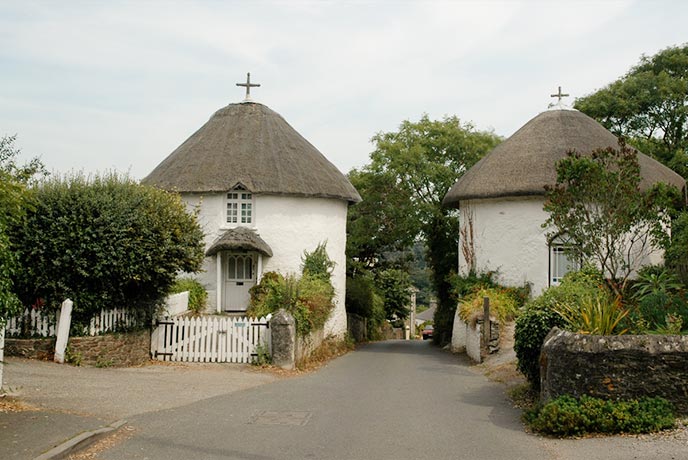
The peaceful village of Veryan is tucked away on the Roseland Peninsula and is famous across Cornwall and beyond for a particularly unusual group of buildings. This little place is home to five perfectly round, thatched houses that were built between 1777 and 1829 by the local vicar Jeremiah Trist.
Trist was a well-known and well-loved character in the area, who contributed much to the isolated Roseland community, including building schools, installing new church bells, planting trees around the village and even building the clock tower. He was the vicar of Veryan for some 52 years and was succeeded in the church by his son, Samuel, who was then the vicar for another 40 years.
It is said that Jeremiah built the five round houses for his five daughters – Charlotte, Harriet, Caroline, Maria and Louisa, constructing each one with circular cob walls with a conical roof. Local legend has it that the vicar chose this unconventional shape to confound the devil, as curving walls meant there was no corner for evil to hide in!
The Veryan Round Houses have since become something of a landmark, attracting artists who love to paint their quirky design, and featuring in calendars and on postcards. Their connection to the devil has become legendary - a crucifix remains on the roof to this day.
The Shell House, Polperro
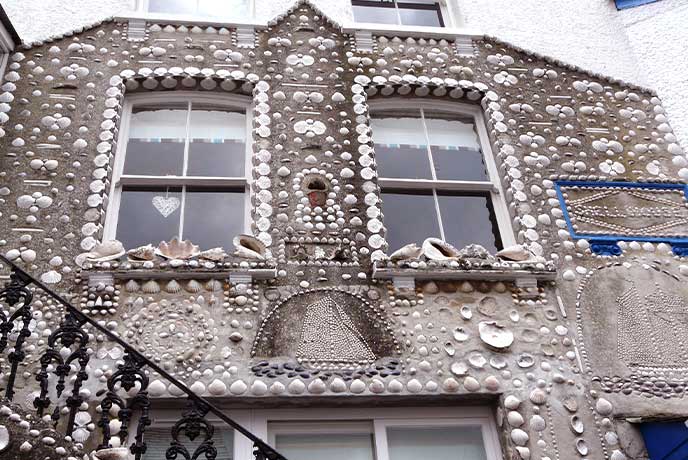
Polperro has to be one of the most beautiful old fishing ports in Cornwall. Its atmospheric tangle of narrow streets, rows of fishermen’s cottages, and picturesque harbour have been attracting visitors for generations and rightly conjure up tales of smuggling and piracy, there’s even a museum dedicated to the illegal trade!
But in this village of picture-perfect views and impossibly quaint cottages there is one building that is perhaps the most admired and most frequently photographed - the Shell House.
Hidden away down a narrow side street, this unusual house was the labour-of-love of retired seaman, Samuel Puckey. Samuel was born in 1887 and spent the majority of his life away at sea. He visited many exotic places, so distant and so different from his native home, and while he was there he collected shells. Thousands of shells! And brought them back with him to Cornwall.
After retiring to Polperro, Puckey spent five years decorating the outside of his new home with the shells he had saved from his adventures. Between 1937 and 1942 he spent his days covering virtually every surface of the front of the building’s first two floors.
Although much of the work is abstract in design, if you look closely you can pick out certain images, all made from shells, including sea gulls, ships, and even the Eddystone Lighthouse! This little building is a real treasure and illustrates how a humble object found lying on a beach can be elevated to create a real work of art.
Samuel lived in his house until the late 1950s and in 1986, Polperro’s Shell House became a listed building in recognition of its unique design and its importance to the community. It remains one of the best-loved and most photographed buildings in Cornwall to this day!
Egyptian House, Penzance
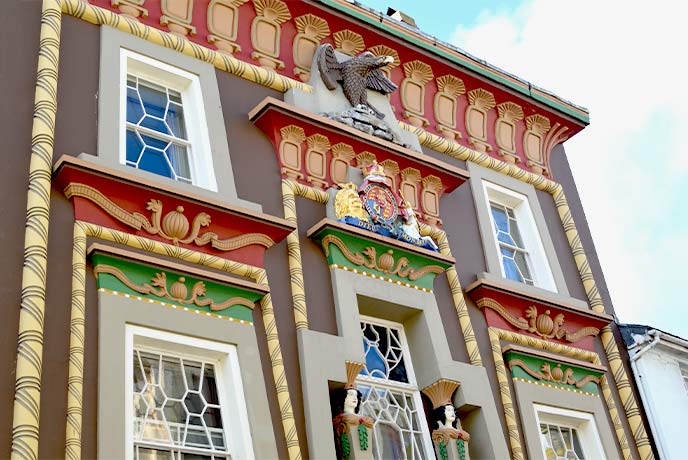
Chapel Street in Penzance is the oldest and most historic thoroughfare in this picturesque seaside town. It’s lined with many interesting and elegant buildings, most dating from the early 19th century, and many now boast interesting antique and craft shops. As well as the ancient parish church, you can also discover the infamous Turk’s Head pub and the home of the Branwell family, where Maria Branwell, the mother of the Brontë sisters, once lived.
Alongside these wonderful buildings is a rare survivor of an unusual style of architecture that became fashionable after Napoleon’s campaign in Egypt. Egyptian House was built by a mineralogist, John Lavin, who purchased two adjacent cottages in an auction in the 1830s for £396.
Lavin then had the buildings transformed from ordinary Cornish cottages into the remarkable pseudo-Egyptian masterpiece that we see today. A riot of colour and bold design, the exotic, stylised emblems incorporated on the outside of the building include lotus buds, fans, and romanticised Egyptian figures.
When it was first revealed, the building with its huge columns was like nothing that the people of Cornwall had ever seen before and it caused a considerable stir and has remained something of a tourist attraction ever since.
Lavin moved into the completed building in 1837 and opened a mineral museum and a shop on the ground floor. Egyptian House was home to the Lavin family until 1910, but by then it was in serious need of restoration and sadly by the 1960s the building was barely recognisable. All its bright colours had been lost under layers of brown and cream paint!
Fortunately Egyptian House has since been lovingly restored to its former glory and today the building is cared for by the Landmark Trust.
Tate Museum, St Ives

One of Cornwall’s finest art galleries and boasting an internationally acclaimed collection of modern art, it’s the iconic architecture that really makes the Tate St Ives standout.
Opened in 1993, the Tate St Ives was designed by husband and wife team, David Shalev and Eldred Evans, to showcase the work of the 20th century artists who had lived and worked in creative hotspot of St Ives, such as Alfred Wallis, Ben Nicholson, and Barbara Hepworth (whose nearby sculpture garden is well worth a visit too).
The museum is built on the site of a former gas works, adjacent to the stunning white sands of Porthmeor Beach, and the architects’ bold design, with its huge circular entrance way, was intended to echo the form of the old industrial structure it replaced.
The Rotunda, as this circular space is known, is rather like an amphitheatre, and its wrap-around windows with their expansive views also provide a link between the inside space and the ever-changing seascape beyond. The building intentionally connects with the landscape and the elements that inspired many of the works that hang on its walls.
Local artists were also able to contribute to the building that was to house their work, look out for the striking stained glass window designed by Patrick Heron in the entrance hall.
Eden Project, Bodelva
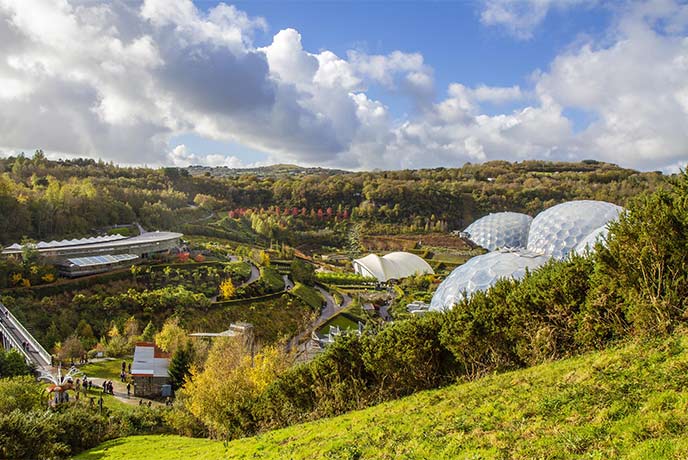
Cornwall’s biomed attraction is worth a jaw-drop all on its own, but especially when you consider that this showstopping selection of biodiversity used to be an abandoned clay pit, devoid of soil, colour, and life. It was in the late 1990s that a few people came together over some pints and talked about creating a place unlike any other; and so, the Eden Project was born.
The clay pit was the perfect blank canvas, offering the group the chance to build something unique, while showcasing the possibilities of recycled and waste materials. The biomes, which are made up of hundreds of 2-metre-deep ‘pillows’, were, and continue to be, revolutionary, creating the perfect environment for different climates and plant life to flourish. In one towering biome you’ll find a tropical rainforest, while the other houses the rolling landscapes found across the Mediterranean, from the olive groves of Greece to the Australian outback.
Throughout the biomes and sprawling gardens, a series of unusual buildings and structures can be found, from a Malaysian House to an ancient cloud chamber. Alongside an incredible horticultural display, the Eden Project also celebrates the unseen through the remarkable Invisible Worlds exhibit, which sits in the equally eye-catching Core building, with its intriguing sunflower-esque design. Children will love chasing the puffs of smoke that dart from the Infinity Blue sculpture, while the range of interactive displays offer a fascinating glimpse into the world beyond our perception.
The Old Duchy Palace, Lostwithiel
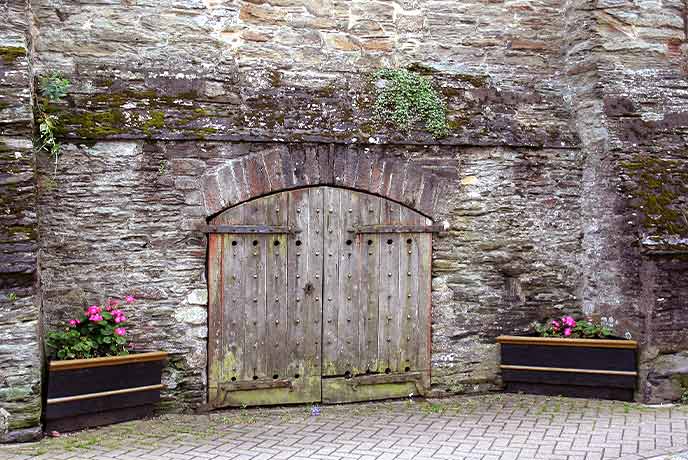
The Old Duchy Palace in Lostwithiel was built in 1292 by Edmund, Earl of Cornwall at a time when this now entirely inland town was actually one of Cornwall’s principal ports.
This seemingly modest building, also known as the Stannary Palace, is an incredibly important relic of Cornwall’s lost independence and was once the centre of Cornish administrative power and the seat of the Duchy Parliament. It may appear fairly unassuming now but an enormous amount of history happened within its ancient walls.
During its long and vibrant history, the Palace has been an Exchequer Hall, prison, court, treasury, administrative offices for maritime affairs, Freemason Temple, and, most recently, the practice space for Lostwithiel’s town band. Sadly, during the so-called ‘Siege of Lostwithiel’ in 1644, the whole building was ransacked by Parliamentary forces and burnt to the ground, losing thousands of precious records dating back many hundreds of years in the process.
A visit to the Old Duchy Palace today, with its incredible chequered history in mind, gives the visitor an invaluable glimpse into a long forgotten past. Why not make your stay extra special with one of our beautiful Duchy of Cornwall cottages, the perfect base for a historical holiday.
Inspired to explore some of Cornwall’s unique architectural treasures? Browse our beautiful holiday cottages across the county and start planning a memorable stay filled with history and fascinating sights and sites.



